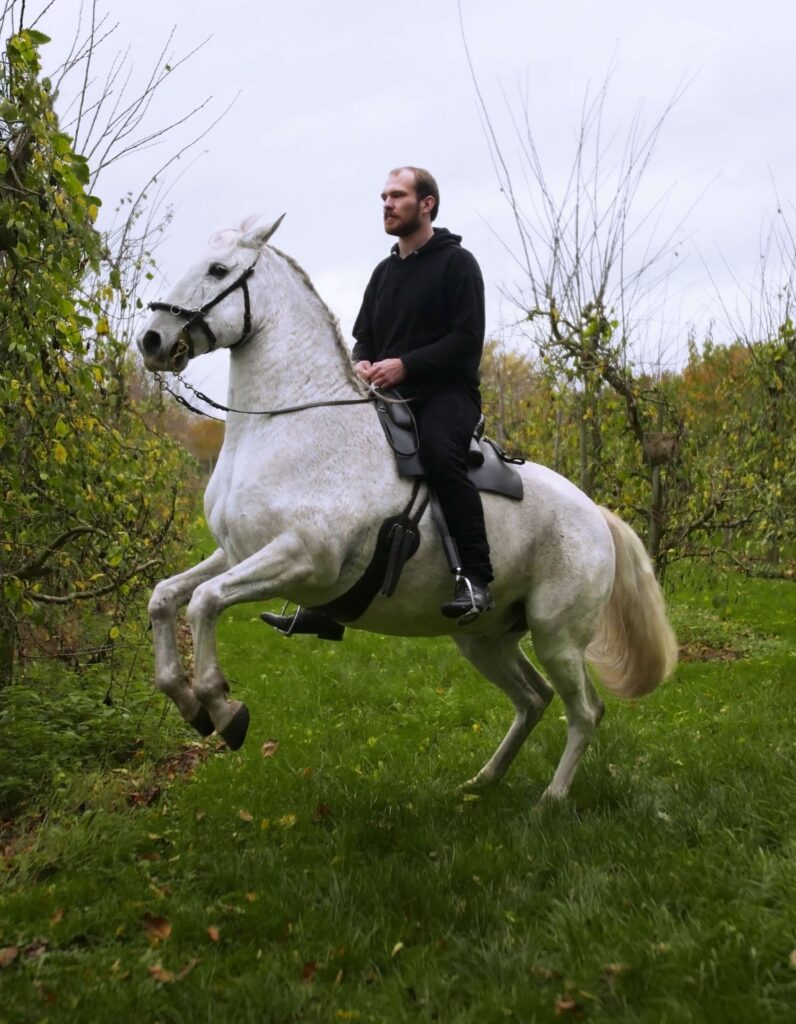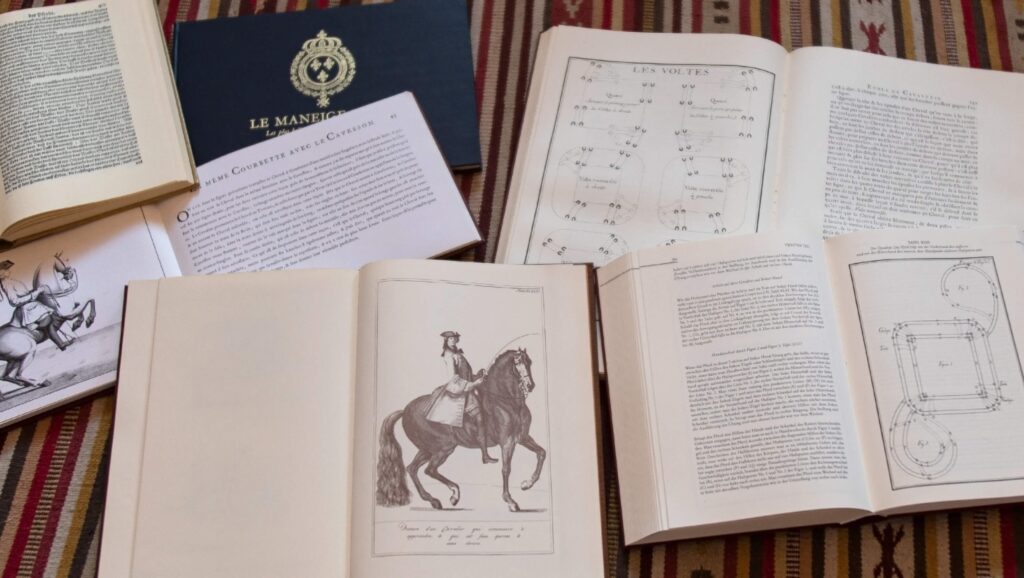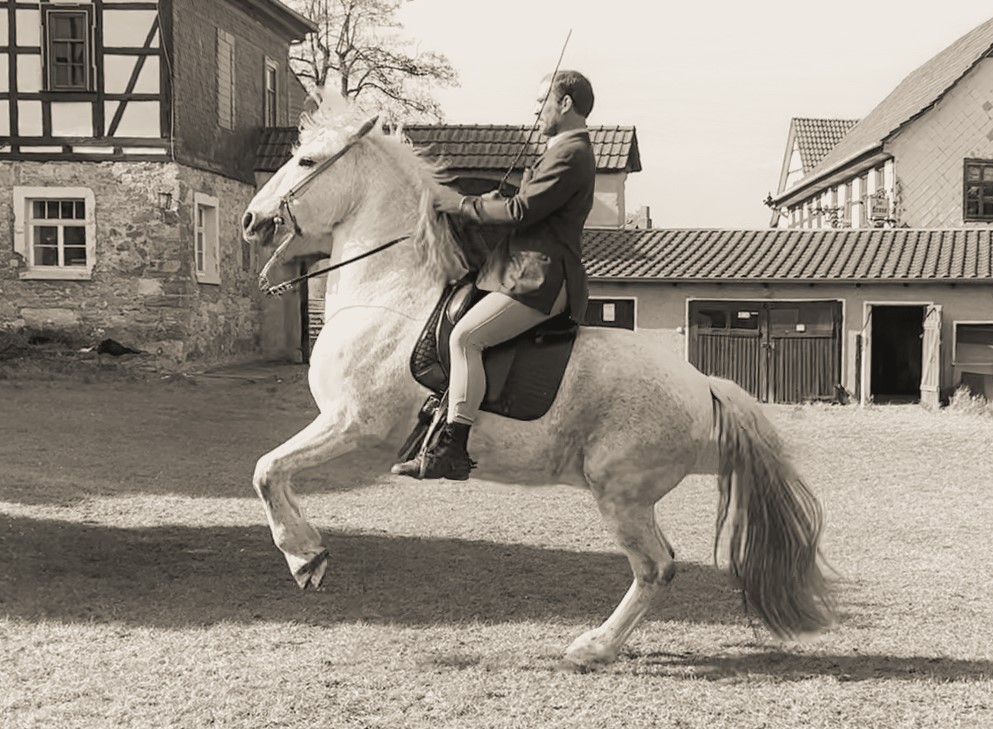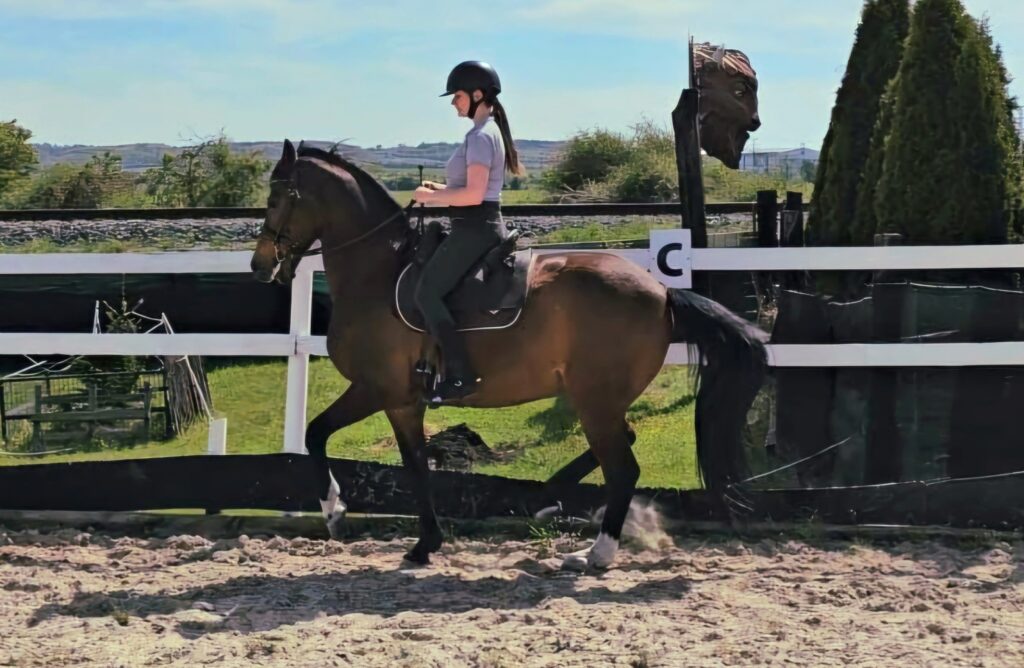Achieve collection in a fair way
Do you encounter resistance in your training? Have you always wanted to experience true self-carriage but don’t know where to start? It is possible to achieve your goals without losing sight of the welfare and happiness of the horse in the process.
Discover a clear and comprehensive method to acquire lightness and collection. Bart’s teaching draws inspiration from classical dressage and riding art throughout the ages and modern insights into equine behavior and welfare. Using a unique approach to postural alignment of both horse and rider, he enables anyone to ride with minimal aids and true collection.
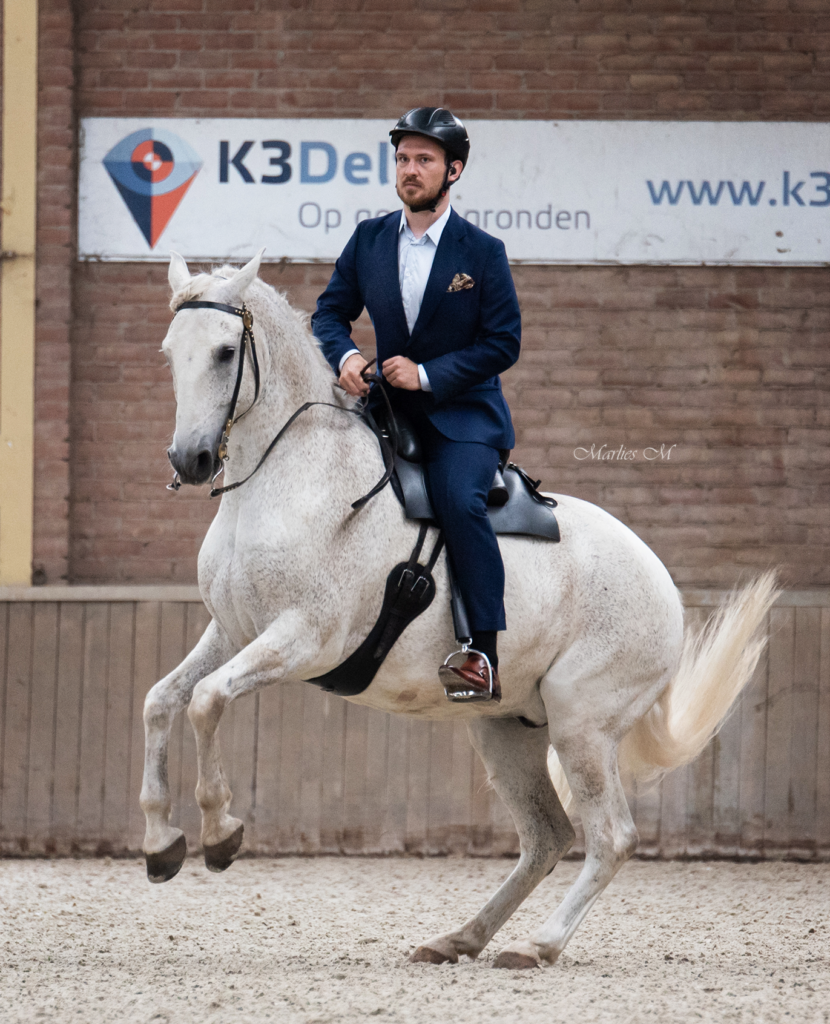
Bart Hartogsveld
Bart’s passion for horses and riding started at a young age, like many others. After discovering classical dressage in 2016, he studied with numerous influential and well-known instructors, both during clinics and private daily mentoring. In his lessons, Bart additionally draws from his experience about learning processes, reinforcement, and stress that he acquired during his master’s and PhD studies in psychology and neuroscience. Since 2018 he focused on teaching the art of dressage through international clinics and private lessons locally.
Historical research
Throughout the years Bart has studied the literature from the 16th to 20th century on equitation and classical dressage as an independent researcher. The goals of dressage throughout the ages, riding with invisible aids and complete unity between rider and horse, are still relevant today. One of Bart’s most well-known projects is that he compiled a comprehensive database, established in 2019, to preserve the valuable knowledge that can be found in the literature. This database is publicly available on this website, including free access to digital versions of the books.
Postural alignment
Another essential element to dressage is proper postural alignment of the horse. In order to avoid resistance and inconsistent results in training the different parts of the horse need to be orientated in a biomechanically optimal way for each exercise.
For example, during the shoulder-in many riders in fact focus too much on inside leg and rein aids, which flexes the spine and pelvis too far out, preventing the outside hind leg to carry enough weight. For every exercise there is a particular orientation of shoulders, neck, pelvis, etc. Just like all other sports, injury prevention and long-term muscle development depend on using proper form.
This requires the rider to use the aids, like leg and hands, properly. Some actions of the aids might bring the horse even further out of balance and prevent collection and increase resistance. Proper timing is also essential, the release of pressure needs to happen in the right moment. Other variables, like the frequency of pressure, if and how fast pressure is increased, how often exercises are asked for after one another, and many others will be discussed during the lessons and talks.
